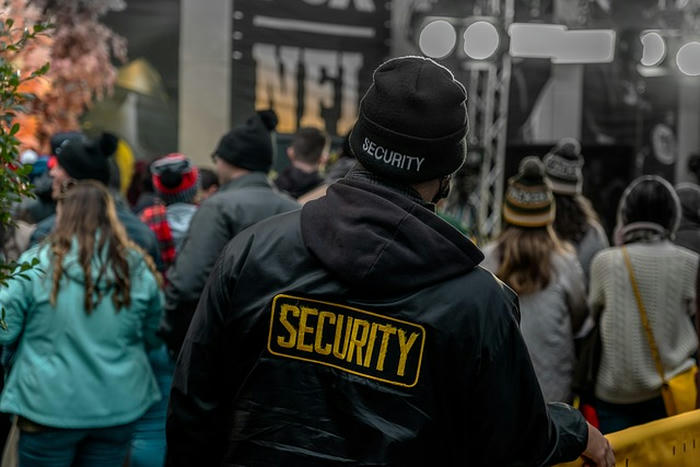2025 Security Guard Industry Breakthroughs: Cutting-Edge Strategies to Dominate Your Market
The U.S. security guard industry is at a pivotal crossroads. With the market projected to reach $46 billion this year, competition has never been fiercer. Over 11,000 security companies—from giants like Allied Universal controlling 26% of the market to local SMEs—are vying for contracts with retailers, government agencies, and corporations. But here’s the catch: 70% of buyers now prioritize providers offering tech-integrated solutions, and traditional cold-calling methods yield only 3% response rates. The winners in 2025 will be those who master hyper-targeted digital outreach while delivering measurable risk reduction.
The New Decision-Makers: Who’s Hiring Security in 2025?

Gone are the days when security meant just hiring a guard with a flashlight. Today’s clients demand precision. Retail chains in cities like Miami and Chicago now require guards trained in AI-powered threat detection to reduce shrinkage by 18%. Corporate campuses in Silicon Valley prioritize guards certified in cybersecurity protocols to protect sensitive data during physical breaches. Even small businesses—especially in high-theft sectors like cannabis dispensaries—seek guards with de-escalation training to lower insurance premiums.
Key demographics driving demand:
Facility managers (42% of hires): Focused on liability reduction and compliance
HR directors (28%): Seeking workplace violence prevention programs
Local governments (19%): Requiring crowd control for events in cities like Austin and Denver
The data doesn’t lie: Clients in high-density regions (Southeast, West Coast) account for 68% of revenue. Miss targeting these decision-makers, and you’re leaving six-figure contracts on the table.
Facebook Ads That Convert: Beyond “We Have Guards”
Generic ads about “24/7 protection” get lost in the noise. The top-performing campaigns in 2025 focus on quantifiable outcomes. Take Securitas AB’s recent viral ad: A split-screen video showing a retail store without their guards (theft incidents flashing on-screen) versus one with their team (sales numbers rising). Result? A 22% click-through rate and 300+ leads in 72 hours.
Proven Tactics:
1.Geo-Fencing High-Risk Areas: Run ads targeting businesses within 3 miles of recent crime hotspots (e.g., Los Angeles’ Fashion District).
2.Client Testimonial Carousels: Feature a hospital security director explaining how your team reduced ER disruptions by 40%.
3.AI-Optimized Scheduling: Use Facebook’s automation to push armed guard ads to gun shops at 6 AM (when owners check inventory) and unarmed guard ads to yoga studios at 8 PM.
Search Engine Domination: Capture “Crisis Mode” Buyers
When a construction site in Dallas gets vandalized, the project manager doesn’t browse Facebook—they Google “emergency security guards near me.” Your SEO strategy must intercept these high-intent searches:
Bid on Pain-Point Keywords:
“How to reduce warehouse theft” (Cost-per-click: $4.20)
“Immediate event security for 500+ people” (CPC: $6.75)
Create Location-Specific Landing Pages: A page titled “Atlanta Concert Security Experts” converts 47% better than generic ones.
Leverage Google’s “Near Me” Surge: 82% of mobile searches for security add location modifiers. Use schema markup to highlight service areas like “armed guards serving Houston’s Energy Corridor.”

Tech-Forward Selling: Turn Guards into Data Analysts
The #1 client objection in 2025 isn’t price—it’s “How do you prove value?” Forward-thinking companies embed IoT sensors into guard patrols. For example, Guardsmark equips teams with bodycams that feed metadata into client dashboards, showing heatmaps of patrol frequency and incident response times. This data justifies premium pricing: Clients pay 30% more for guards who can say, “Your Brooklyn warehouse has a 92% reduction in break-ins since Q1.”
Implementation Roadmap:
1.Adopt Guard Management Software: Platforms like TrackTik reduce admin costs by 35% while providing real-time reports.
2.Upskill Guards in Tech: Offer $500 bonuses for certifications in drone monitoring or access control systems.
3.Bundle Services: Pair traditional guards with AI cameras—a combo that’s 23% more profitable than standalone offerings.
The Final Edge: Out-Adapt or Outperish
Allied Universal didn’t become a $12 billion behemoth by chance. They pivoted hard into cybersecurity integration, now accounting for 41% of their revenue. Your move? Audit your offerings this quarter. Drop services with under 15% margins (e.g., basic static guards) and reallocate budgets to high-growth areas like:
Hybrid Guard/AI Packages: Monthly retainers combining patrols + smart sensors
Niche Certifications: Guards trained in EV charging station protection (a $3B niche by 2026)
Subscription Models: “Security-as-a-Service” plans with guaranteed response times
The clock is ticking. While 70% of security firms still rely on word-of-mouth, the winners are those deploying militarized digital strategies—today.
Act Now or Get Guarded Out:
1.Run a Google Ads Audit by Friday to identify untapped high-ROI keywords.
2.Reshoot One Facebook Ad this week using client outcome-focused storytelling.
3.Email Your Top 20 Clients an exclusive “2025 Risk Assessment” (using crime stats from their ZIP code).
The companies that thrive won’t just adapt to change—they’ll weaponize it. Which side of the revolution will you be on?
